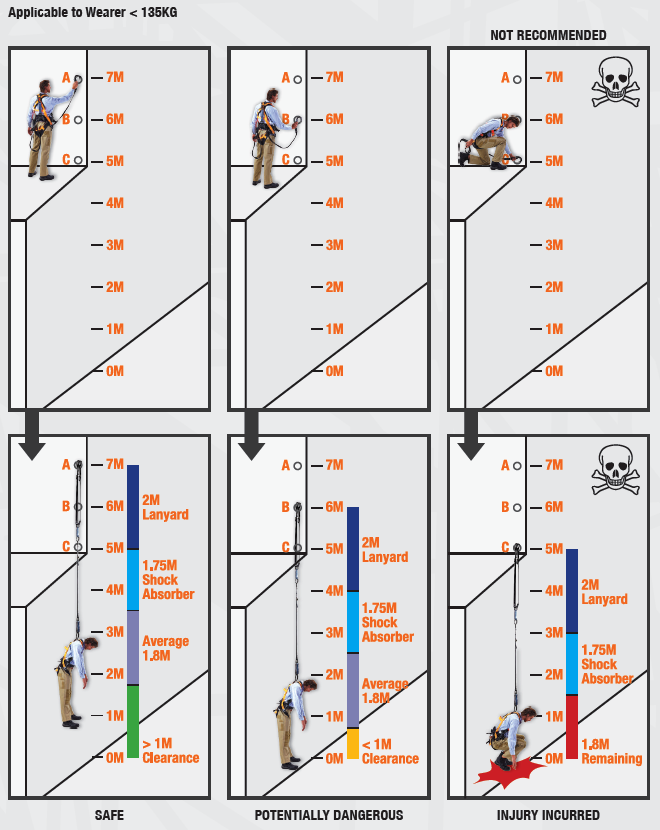When used and fitted correctly, height safety, harnesses and specifically fall arrest systems and kits are intended to minimise the inherent dangers of working at heights. However, an important, and oft overlooked component, of these safety procedures and devices is Minimum Free Space (MFS). MFS is a safety zone - a straight vertical line between the point of anchorage and the ground; the nearest dangerous obstacle or platform.
Factoring in MFS is a massively important component of avoiding injuries while working at heights. It is evaluated with the formula of:
LENGTH OF LANYARD
+
LENGTH OF SHOCK ABSORBER
+
HARNESS STRETCH
+
DISTANCE BETWEEN HARNESS ATTACHMENT POINT AND UPPER BACK
+
SAFETY CLEARANCE AT THE BOTTOM OF FALL
To illustrate a worst-case scenario, which is when the anchor point is at the worker’s feet, (to be avoided at all times) the MFS is calculated as follows:
Lanyard length + Shock absorber element = 2m + 1.75m (maximum extension of the shock absorber element in an extreme fall)
+ Harness system stretch 0.40m + Distance from anchor point (at feet) to harness attachment point i.e 1.8m (for a person of 2m height): Add 0.5m provisional distance if wearer weight is < 136KG.
2m + 1.75m + 0.4m + 1.8m = 5.75m (A wearer >136kg should take extra care in the calculation of their MFS – extra reading AS/NZS1891.4).
Moreover, if there is an obstruction between the ground and your fall, the obstruction should be factored in. The fall arrest system cannot prevent you from hitting a pole on the way down. Try and avoid allowing obstructions below you while working at heights. If they are unavoidable, they may be considered the new 'ground' for the MFS.
For a visual demonstration of the principle, view the included diagram, or view down below. (click link for full size)






